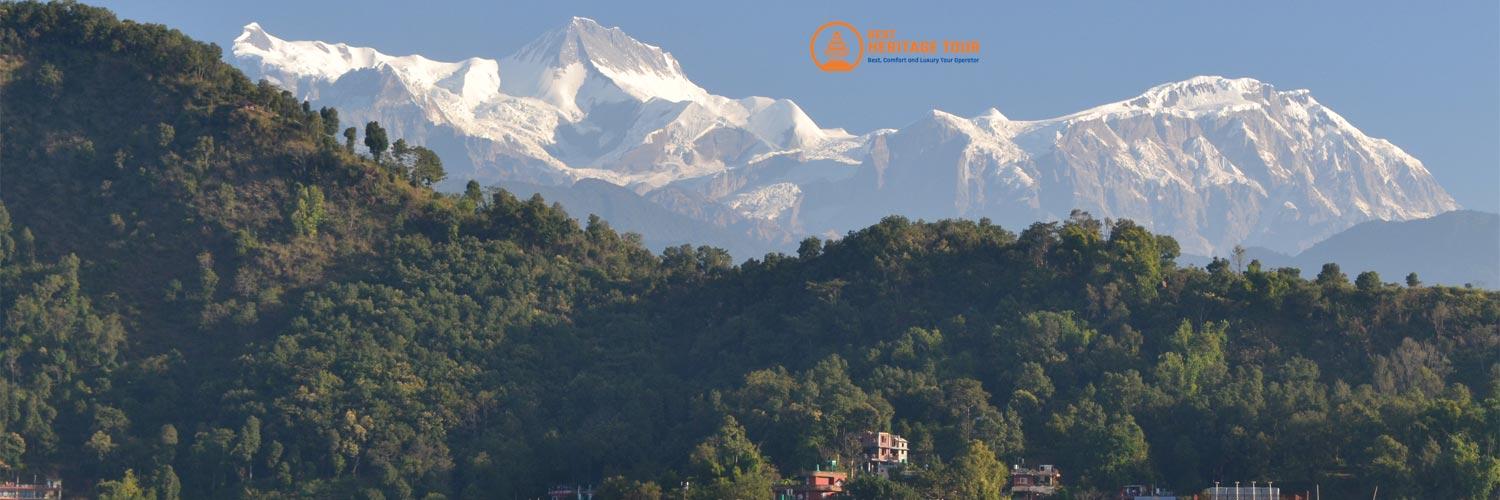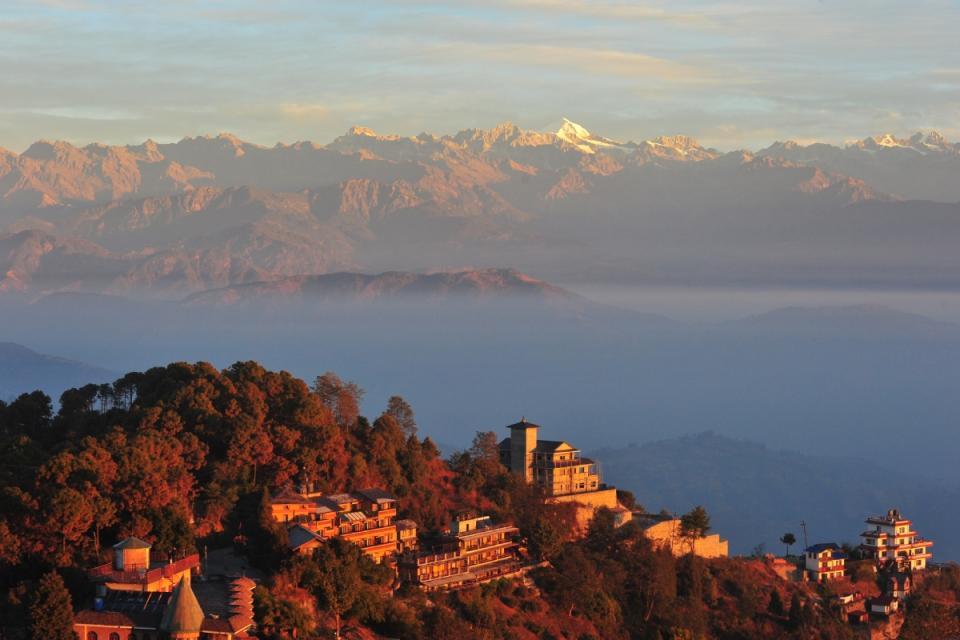There’s a certain magic in witnessing the first light of dawn slowly creeping over the towering Himalayan peaks. Nepal is renowned for its stunning sunrise viewpoints, and two of the most famous spots are Nagarkot, near Kathmandu, and Sarangkot, near Pokhara. Each location offers a spectacular experience of the sun rising over majestic mountains, but they differ in scenery, atmosphere, accessibility, and cultural vibe.
If you’re planning a trek or a scenic escape, understanding what makes each spot unique will help you choose the perfect sunrise adventure. Let’s dive deeper into what Nagarkot and Sarangkot have to offer and which sunrise might capture your heart more.
The Setting: Where Are They Located?
Nagarkot is a tranquil hill station situated about 32 kilometers east of Kathmandu, nestled in Bhaktapur District. It sits at an elevation of approximately 2,175 meters (7,136 feet) above sea level, providing visitors with sweeping vistas of the Himalayan range. The hill overlooks the Kathmandu Valley, and on clear days, the view stretches all the way from Annapurna in the west to Mount Everest in the east - a panoramic feast for the eyes. The area is known for its cool mountain air and lush forests of pine and rhododendron. Due to its proximity to the capital, Nagarkot has become a popular weekend getaway for city dwellers seeking a quick breath of fresh mountain air.
Sarangkot is perched on a hilltop about 1,600 meters (5,250 feet) above sea level, just 11 kilometers from Pokhara’s lakeside area. The location is famous not only for its Himalayan sunrise views but also for its stunning reflections on Phewa Lake, which lies below. The surrounding Annapurna massif and Machapuchare (Fishtail) peak create a dramatic backdrop that enchants every traveler. Sarangkot’s unique position offers a combination of mountain grandeur and tranquil lakeside charm, making it a favorite among photographers and nature lovers alike.
The View: What Will You See?
At Nagarkot, as the first rays of the sun illuminate the horizon, the Himalayan peaks gradually reveal themselves in stunning detail. The rising sun casts a warm golden glow on the snow-capped mountains, highlighting peaks such as Langtang, Ganesh Himal, and, if weather permits, the towering Mount Everest. The view is often softened by a gentle morning mist that lingers over the rolling hills and terraced fields of the Kathmandu Valley, creating a mystical and peaceful atmosphere. The vast expanse of the valley below feels almost like a miniature model, and the contrast between the deep green forests and the white peaks adds to the breathtaking scenery.
In contrast, Sarangkot’s sunrise is more dramatic and intense. As the sun emerges from behind the rugged Annapurna and Dhaulagiri ranges, it sets the snow-covered peaks ablaze in vibrant hues of orange, pink, and red. What sets Sarangkot apart is the beautiful reflection of these mountains on the calm surface of Phewa Lake, doubling the visual spectacle and adding a surreal quality to the scene. This combination of fiery mountains and tranquil waters makes the sunrise at Sarangkot especially captivating, leaving visitors in awe of nature’s artistry. It’s a prime spot for photographers seeking that perfect shot of the Himalayas mirrored on the lake.
Accessibility: Which Is Easier to Reach?
Nagarkot is approximately a 1.5 to 2-hour drive from Kathmandu. The journey takes you along narrow, winding roads that climb steadily from the valley floor to the hilltop. Despite the road’s twists and turns, the route is paved and well-maintained, making it accessible to private vehicles, taxis, and tourist buses. This convenience makes Nagarkot an ideal destination for travelers looking for a quick escape from the city without much hassle. The area offers ample accommodation options, many with terraces or balconies designed to catch the sunrise view, allowing guests to enjoy the spectacle from the comfort of their rooms.
On the other hand, Sarangkot is much closer to Pokhara, reachable by a 30- to 40-minute taxi or bus ride from the lakeside town. For the more adventurous, there is also the option to hike up to Sarangkot from Pokhara, which takes around 2 to 3 hours through beautiful forested trails and local villages. The road to Sarangkot is also paved and easy to navigate. Sarangkot’s proximity to Pokhara means that visitors can enjoy the vibrant amenities of the lakeside town while still being able to experience a peaceful hilltop sunrise. This accessibility makes Sarangkot a versatile destination for both casual travelers and avid trekkers.
Accommodation & Atmosphere
Nagarkot offers a variety of accommodation options ranging from luxury resorts to charming guesthouses and family-run homestays. Many hotels have large viewing decks or rooftop lounges that provide uninterrupted views of the Himalayan sunrise. The atmosphere in Nagarkot is generally quiet and serene, especially during the early morning hours before the sun rises. It’s a great place for travelers who prefer a slower pace, with opportunities for meditation, yoga, and quiet contemplation amidst nature. The nights can be crisp and cool, and the lack of heavy commercial development helps maintain its peaceful ambiance.
Sarangkot has a slightly different vibe. While it does have some comfortable lodges and guesthouses, the accommodation scene is not as extensive or upscale as Nagarkot. However, its proximity to Pokhara’s bustling lakeside means visitors have easy access to restaurants, shops, and tour operators. Sarangkot’s atmosphere is livelier, especially as the day progresses, with paragliders taking off from the hilltop and tourists exploring the surrounding trails. This makes Sarangkot a great choice for travelers who want to combine serene sunrise views with a touch of adventure and social interaction.
Activities Beyond the Sunrise
While the sunrise is the main attraction at both spots, there are plenty of activities to enjoy afterward.
In Nagarkot, you can explore the many hiking trails that weave through pine forests, terraced farmlands, and small villages. Popular hikes include the trail to Changu Narayan Temple, a UNESCO World Heritage site, or a longer trek down to Dhulikhel. Mountain biking enthusiasts can also find challenging routes with rewarding views. For those seeking relaxation, the fresh air and scenic landscapes make Nagarkot an ideal spot for picnics and nature walks.
Sarangkot offers a more adrenaline-filled experience. Apart from hiking and exploring local villages, Sarangkot is one of Nepal’s premier paragliding spots. After watching the sunrise, many visitors take to the skies for a bird’s-eye view of the Annapurna range and Phewa Lake. There are also zipline adventures and mountain biking trails in the vicinity. For cultural explorers, nearby Pokhara offers museums, traditional markets, and lakeside boat rides, enriching your travel experience.
Photographic Opportunities
Nagarkot is a photographer’s dream for capturing wide panoramic shots of the Himalayan range. The soft light during sunrise lends itself to gentle pastel hues, perfect for creating dreamy, atmospheric images. The mix of mist, forest, and distant snowy peaks allows for a variety of compositions. Sunrise shots from hotel terraces or the Nagarkot View Tower offer iconic perspectives that highlight Nepal’s majestic landscapes.
Sarangkot is arguably more dramatic and visually striking for photographers. The fiery colors of the rising sun reflect vividly on Phewa Lake’s still waters, doubling the beauty of the mountain silhouettes. Close-up shots of Machapuchare (Fishtail) and the Annapurna range are a highlight, with the lake’s mirror effect creating a symmetrical composition. The nearby Sarangkot View Tower and surrounding ridges provide multiple vantage points to capture the sunrise from different angles.
Best Time for Sunrise Viewing
The best time to visit either Nagarkot or Sarangkot for clear, vibrant sunrises is during the post-monsoon and winter months, roughly from October to April. During this period, the skies tend to be clearer, and the air is crisp, offering excellent visibility of the Himalayan peaks.
-
Nagarkot: Winter mornings can be especially clear and cold, sometimes with a dusting of snow on the hills. Springtime brings blooming rhododendrons, adding color to the scenery.
-
Sarangkot: The months immediately following the monsoon (September to November) provide the most vivid sunrises with minimal haze. Early spring is also pleasant but can be slightly hazy.
Be sure to check local weather forecasts in advance since cloud cover or fog can obstruct the view.
Vibe & Experience: Which One Is For You?
If you prefer a quiet and contemplative atmosphere where you can watch the sunrise in peaceful solitude, Nagarkot is an excellent choice. It’s ideal for couples, families, or travelers seeking a calm retreat close to Kathmandu. The cooler temperatures and slower pace allow for moments of reflection and connection with nature.
If you enjoy a more dynamic and active environment with opportunities for adventure activities and easy access to urban amenities, Sarangkot will suit your style better. It’s perfect for photographers, adrenaline seekers, and travelers who want to combine mountain views with lively social scenes. The energy of paragliders and the nearby lakeside town add vibrancy to the experience.
Conclusion: Which Sunrise Should You Choose?
Both Nagarkot and Sarangkot provide unforgettable Himalayan sunrises, each with its own unique charm and appeal. Your choice depends on your preferences for accessibility, atmosphere, activities, and the type of views you want to savor.
-
Choose Nagarkot for serenity, expansive panoramic mountain views, and a peaceful escape near Kathmandu.
-
Choose Sarangkot for dramatic mountain-lake reflections, adventure sports, and a vibrant travel vibe near Pokhara.
Want to see both? Let Best Heritage Tour help you design an itinerary that includes both stunning sunrises, along with treks, cultural tours, and authentic Nepalese experiences.
Contact us today to plan your dream Himalayan adventure!
Website: www.bestheritagetour.com
Email: info@bestheritagetour.com / bestheritagetour@gmail.com
Phone/WhatsApp/Viber: +977-9851149197
Office: Thamel Marg, Kathmandu, Nepal
Author: Best Heraitage Tour
Date: 5th August, 2025


